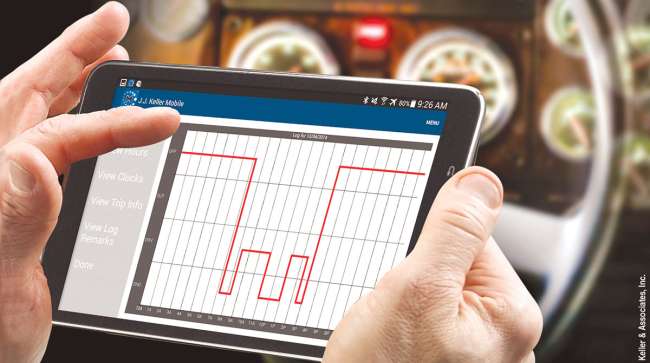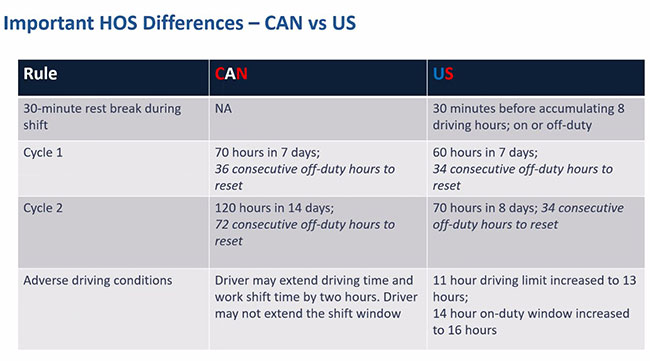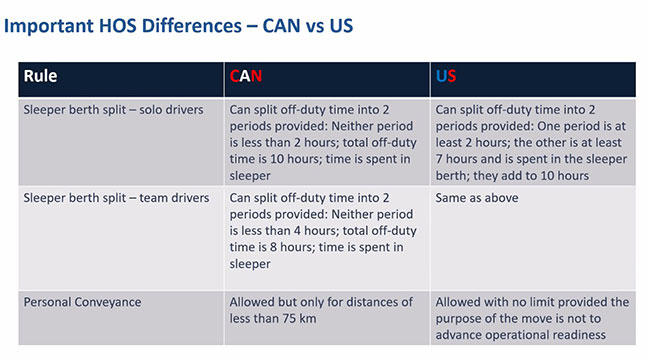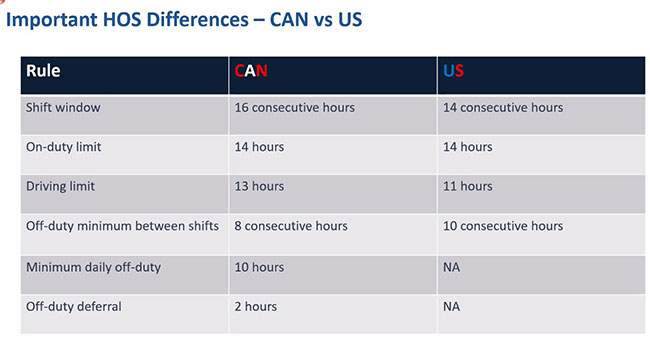Staff Reporter
As Canadian ELD 'Progressive Enforcement Period' Nears, Expert Urges Training

[Stay on top of transportation news: Get TTNews in your inbox.]
Although no devices have been approved for drivers, Canada’s electronic logging device mandate is less than a month away and fleets should prepare accordingly, according to P. Sean Garney, vice president of Scopelitis Transportation Consulting.
Canada’s ELD mandate, which is scheduled to take effect June 12, applies to federally regulated carriers, meaning those that operate across provincial boundaries and into the United States.
One major difference between the U.S. and Canadian ELD regulations is that Canada’s mandate includes a third-party certification rule, which stipulates that ELDs must be certified by a third-party group.

Garney
This requirement differs from U.S. regulations, under which ELD vendors self-certify that their device is compliant with technical specifications and registered with the Federal Motor Carrier Safety Administration.
Garney, who participated in a webinar hosted by the transportation management system company Axele on May 13, said Canada has experienced technical and bureaucratic challenges that are creating a backlog with certifying ELDs. During the session, he said no devices had been approved yet. Garney noted the backlog has placed Transport Canada, the country’s federal transportation agency, in a difficult position.

Axele
“[Enforcement] has been a bit of a quagmire because there’s been quite a bit of angst in the industry due to the fact that there’s no certified devices,” Garney said. “This has not fallen on deaf ears. They can’t reasonably require anybody to adopt something that doesn’t exist and currently none exist. They do not want the industry to delay in complying with this rule, but they want to be fair in how it’s enforced.”
Minister of Transport Omar Alghabra in March announced government agencies would work with the industry on a “progressive enforcement period” to allow carriers sufficient time to install certified ELDs.

Axele
In early May, the Canadian Council of Motor Transport Administrators announced it developed an approach for jurisdictions to consider when adopting an enforcement strategy. CCMTA noted jurisdictions intend to support the mandate without penalties until June 12, 2022. This plan received support from the Canadian Trucking Alliance, which had recommended a gradual enforcement approach over the 12-month period starting this June.
“The Canadian Trucking Alliance wanted to see full enforcement of the ELD mandate beginning in June 2021, but as we have been aware for some time, that would have been difficult to achieve for several reasons, not the least of which is the worldwide pandemic which caught the industry, governments and suppliers by surprise in 2020,” CTA President Stephen Laskowski said.

Axele
The third-party certification policy means U.S.-based carriers that travel into Canada will need to have a Canadian-certified ELD. If an ELD manufacturer in the U.S. does not want to go through the certification process, then the carrier using that manufacturer’s devices will need to switch to a different vendor.
Garney recommended carriers communicate with their ELD providers to discuss their timelines for Canadian certification.
Another difference between the nations’ ELD systems is Canada’s mandate will not include a grandfather period for older e-log systems known as automatic onboard recording devices, or AOBRDs.

Next-level technologies hold the potential to enhance safety and efficiency in transportation, but it takes a lot of work behind the scenes to advance these ideas from concept to reality. We talk with Christoph Mertz of the Robotics Institute at Carnegie Mellon and Huei Peng of the University of Michigan. Hear a snippet above, and get the full program by going to RoadSigns.TTNews.com.
Exceptions to Canada’s ELD mandate are in place for vehicles older than model year 2000, short-term rental equipment (30 days or fewer) and shorthaul drivers (those covering up to 160 kilometers).
Garney also urged participants to review policies and refresh themselves on hours-of-service rules, which vary between the U.S. and Canada. Shift windows in Canada are 16 consecutive hours, while those in the U.S. are 14 consecutive hours. Canada has specific sleeper berth split rules for teams and solo drivers. In the U.S., personal conveyance is unlimited provided the purpose of the move is not to advance operational readiness, while in Canada, it is allowed for distances shorter than 75 kilometers.
Canadian carriers have auditing responsibility for the logs, which includes accounting for unidentified driving time, an issue Garney said was a challenge with ELD adoption in the U.S. He urged carriers to train drivers to log in as soon as they climb in the vehicle — and remember to log out when they leave.
“Otherwise, you’re going to have all these unidentified driving time notations that you’re going to have to rectify,” Garney said. “Boy, those can build up quickly, especially when mechanics start hopping in trucks and moving them around the yard. Consider how you’re going to manage your unidentified driving time and train your drivers from the 'get' to log in and log out whenever necessary. Unidentified driving time can be a lot to deal with.”
Want more news? Listen to today's daily briefing below or go here for more info:


